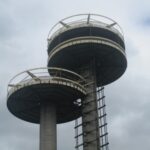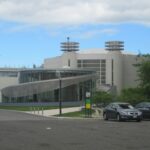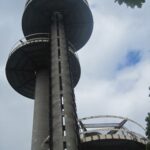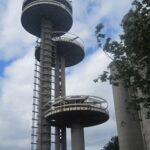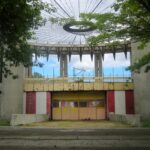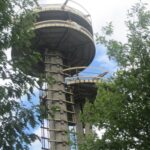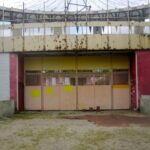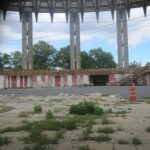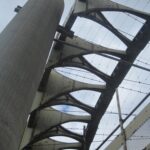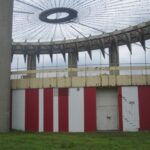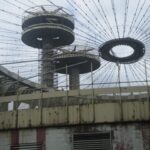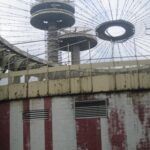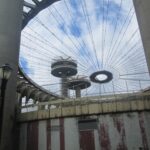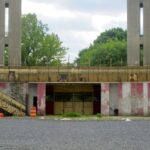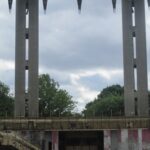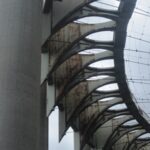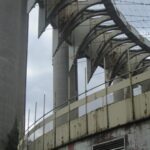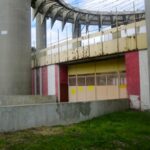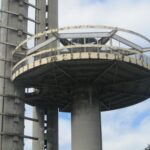The latest World’s Fair, Expo 2010, opened earlier this month in Shanghai. The US entry is pretty weak (someone, and I can’t recall whom, recently commented that it looks like a Lexus dealership). More impressive is Thomas Heatherwick’s British pavilion, a giant acrylic dandelion known as the “Seed Cathedral,” which stands as one of the more fantastic architectural projects of recent memory. What will come of it when the Expo closes, I have no idea; some World’s Fair monuments hold up better than others. With that in mind, I took a ride out to Flushing Meadows over the weekend to check in on New York’s vision of tomorrow, circa 1964—or at least Philip Johnson’s interpretation thereof. The future, alas, isn’t what it used to be, and it hasn’t been for some time.
Johnson’s New York State Pavilion is in all ways an outlier. Physically, it’s removed from the city center, out past LaGuardia along the Grand Central. Aesthetically? Johnson went through many styles in his career, but there’s nothing in his catalog—or anyone else’s—quite like this. Its three disk-capped towers are most familiar from the climactic scene of Men In Black, in which they transform into flying saucers and are blasted away by Will Smith. Today, they still look like torched aliens—the whole project is a mouldering wreck from another, distant place. Those idiosyncratic towers, now rusty and inaccessible, once held observation decks and restaurants. They were actually late additions to the project, included because Nelson Rockefeller, then governor, wanted his contribution to be the tallest in the fair. The ovular pavilion itself, known then as the “Tent of Tomorrow,” was a rather butch structure, given its seemingly festive, lightweight function. (And inasmuch, akin to its erstwhile neighbor, Shea Stadium.) Sixteen massive cast-concrete columns, each over 100 feet high, were topped by a steel frame and cable system designed to carry a colored plastic canopy, now missing. Without the plastic canopy, the cable stays and their ocular pendant give the disconcerting impression of a looming, visionless eye. Beneath this cyclops, on the ground, is a mosaic map of NY (sponsored by Texaco) at present invisible through the rubble and weeds. The whole thing cost an enormous fortune, something on the order of $15 million.
Last year, the pavilion was granted landmark status, and there are theoretically plans at some kind of restoration. Gilmore Clark’s Unisphere, which is just a few hundred feet away along an axial pathway, has been kept up, and is now incorporated into the National Tennis Center. Johnson, for his part, didn’t mind that the pavilion was a wreck. “It’s rather nice,” he said. He always liked ruins. (His Glass House was inspired by visions of them, but that’s another story.) On Sunday, cricketers playing on the adjacent field made no acknowledgment of its lumbering presence. But two strolling tourists walked by, looked wonderingly over the construction fencing, and took a couple of pictures. Then they moved along. It was a chilly afternoon.
A few more shots follow.

